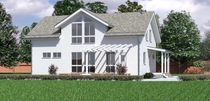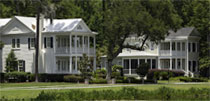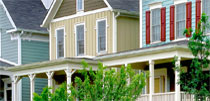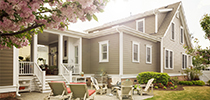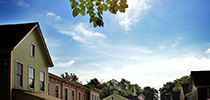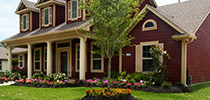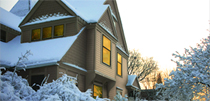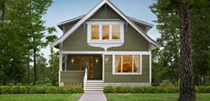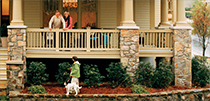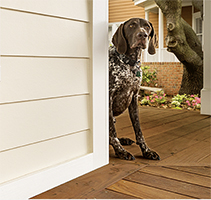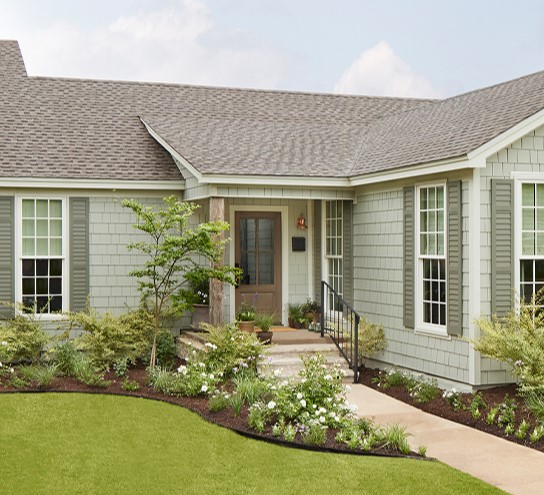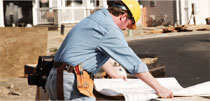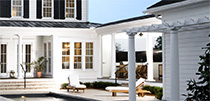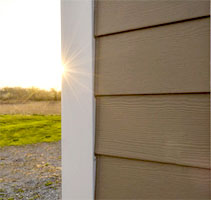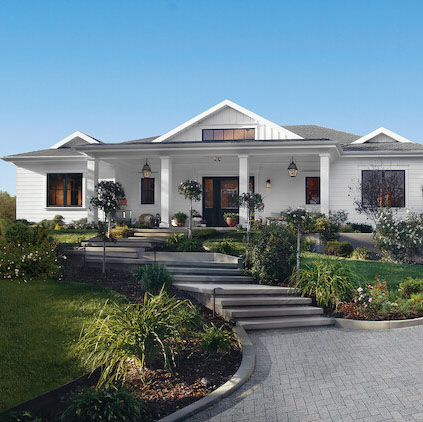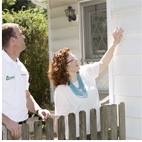by Bridget Kulla
8/20/2015

There’s something mesmerizing about a flickering fire—it draws people together and slows us down. Whether you have a chiminea or a full-on fire pit, the warmth, soft light and crackle all add to the ambiance of your outdoor space. Throw in a few Adirondack chairs and a bottle of red and your outdoor space just got an upgrade. We’ll walk you through some must-consider tips before you install an outdoor fire pit.
Location scouting.
Scout a location for the fire pit; whether it is on dirt, grass or a concrete surface, you’ll want to be sure the pit is a safe distance from your home and your neighbors’ homes (at least 10 feet). If you have Hardie® siding, it will not ignite or add fuel to a fire like wood and vinyl can when exposed to a direct flame, but even still a safe distance away from the home makes sense. You should also check your neighborhood codes on open flame rules. Besides scoping out the surface below, look up to be sure you’re clear of low hanging tree limbs and power lines.

Consider the view.
Before you settle on your future pit locale, look out at the view. Is this spot highlighting a vantage point you’d like to take in on countless sunsets? If so, you’re golden. If not, see if you can highlight a lookout spot that soothes you. And while you’re considering the view, consider the wind, too. If a location is too gusty it may put a smoky damper on your fire pit gatherings.
Prep the pit zone.
If you’re opting for a non-concrete location, you’ll likely want to map out a circular area of gravel on top of compacted soil. Gravel is ideal for high-traffic areas, after all if you leave grass around the pit, it’ll probably mean some torn up sod. If you’re opting to place your pit on a concrete slab, you may want to plan to cut a hole into the concrete so the ash goes into the ground. It’s not necessary, but could prevent any staining.

Single out your stones.
When selecting stones or gravel, you want to choose a rock that not only fits your outdoor aesthetic but also is heat resistant. Lava rock is a porous, chic choice that doesn’t hold on to much heat, it also comes in a few shades such as red, brown and gray. River stones are another durable option for an organic, simple look.
To Kit or Not to Kit.
If you’re looking to avoid cutting bricks, mixing concrete and traditional masonry, you can invest in a premade kit from your local home store. These come equipped with all the pre-cut bricks you’ll need to make the pit and the steel ring to contain the fire.
Think accessories.
Depending on the size of your pit, you can likely find a screen to reduce any blowing ash or sparks. Some pits can accommodate a grill insert, too, which can be helpful for cookouts.
Now that you’ve mulled over all the pit possibilities, it’s time to make some decisions and plant your fire pit—then all you’ll have to do is wrangle friends and sit back and soak up your new space.

